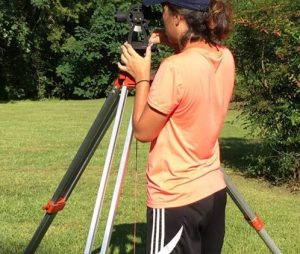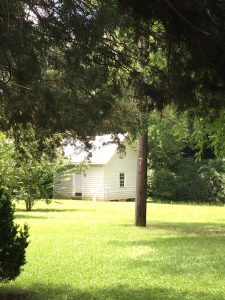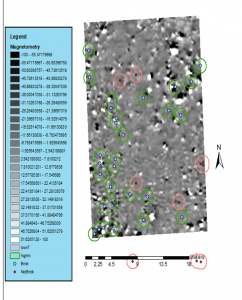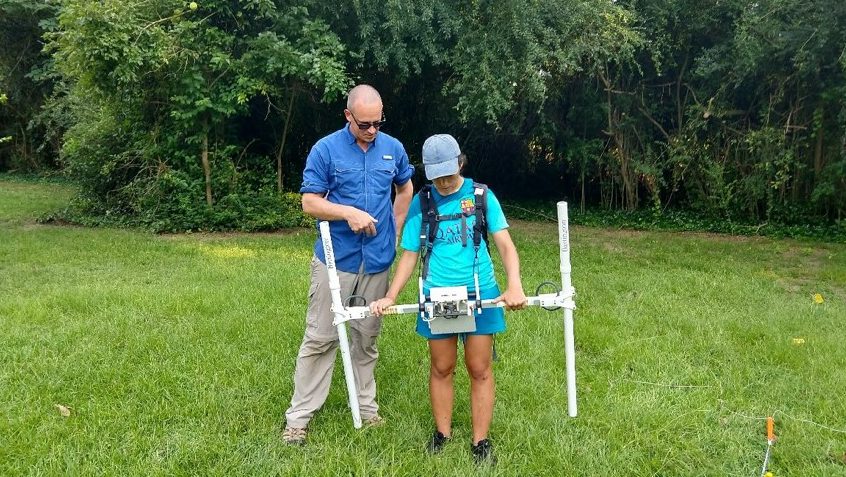
TUSCALOOSA, Ala. — After conducting surveys on the Magnolia Grove plantation home in Hale County, second-year anthropology master’s student Natalie Mooney may have discovered a pattern to find other slave houses in the Alabama Black Belt region that have been lost to time.
Prior to entering the master’s program at The University of Alabama in 2017, Mooney worked with Ashley Dumas, an associate professor of anthropology at the University of West Alabama, on the Black Belt Slave Housing Survey, which is an attempt to document extant slave dwellings in the Black Belt region.
Her work on the survey produced an article in the scholarly journal The Alabama Review. Dr. Ian Brown, a UA professor of anthropology, who was an adviser to Dumas, saw the article Mooney co-authored and wanted to work with her on one of the survey’s locations, Magnolia Grove in Greensboro. He became her faculty adviser.
“I had to form my own project and thesis work,” said Mooney, a Joppa native. “There was a lot of historical work that went into it, and the plan was to excavate the second slave cabin at Magnolia Grove that was extant.
“Originally, the 25-acre Magnolia Grove property had a plantation house, office, a bathroom, smokehouse, barn, kitchen and two slave houses. Now there is the office, main house, kitchen and the one slave house.”

Both slave houses on the property were atypical because they were built off the ground with brick pier foundations, which is unusual for slave houses built prior to the 19th century, she said. They were typically built directly on the ground, but the practice changed in the 1830s because houses built directly on the ground exposed people to harmful bacteria.
Another feature Mooney identified with the Magnolia Grove slave houses is that they were placed in the back of the big house – the slaveowner’s house. This configuration proved to be consistent with 29 of the 30 plantation sites in the region on the Historic American Building Survey.
Mooney is using information in the History American Building Survey to create a survey of her own, The Black Belt Built Slave Landscape Survey.

“This is completely different to the Hollywood presentation of plantations of having this grand alley of slave houses leading up to the big house because they put them all in the back,” she said. “We’re not sure if this is because the plantation owners didn’t want people to see them, if the slaves had some preference of location, or the plantation owners actually wanted some distance from their slaves. These are all possibilities.”
To locate the seemingly vanished second slave cabin at Magnolia Grove, Mooney had to first locate where it might be. Before she could do that, she had to make a strong case about where she believed it would be to the Alabama Historical Commission, which is a state-governmental organization that owns the property.
Magnolia Grove is on the National Register of Historic Places, and, as such, it’s protected as a historic and archaeological resource to preserve, which limits what can be done to the site.
To locate the second slave cabin, Mooney ran a multitude of surveys that are common in archaeology, such as using a transit – a surveying instrument used to measure vertical and horizontal angles and distances – to find elevation that could be used to create an elevation map.

“We found 46 different cases throughout the search grid of unidentified materials,” she said. “My belief is that those unidentified cases were all bricks.
“To reinforce my theory that these were bricks – since I cannot prove it until they are excavated – is that they have square features, which is usually constructions built by Western architects. They were also lining up on top of each other within one meter of each other, which usually indicates construction.”
With the first part of her Black Belt Built Slave Landscape Survey at Magnolia Grove complete, Mooney wants to broaden the survey across the Black Belt region to identify other extant slave houses.
Mooney will unfortunately not be able to excavate Magnolia Grove or any of the other sites she plans to examine to prove her theory. The survey is her master’s thesis, and she graduates in August.
The Alabama Historical Commission will likely conduct the excavations, she said.
“I will one day return to get my Ph.D., and, hopefully, I can continue to work in the Black Belt. This area needs future research, it needs to be tested truth.”
Contact
Jamon Smith, media relations, jamon.smith@ua.edu, 205-348-4956
Source
Natalie Mooney, nnmooney@crimson.ua.edu
